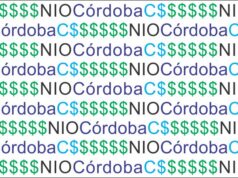Nicaraguan families received a total of US $1.030 Billion that was sent back to Nicaragua in the first half of 2021, according to the report on 2021 Remittances from the Central Bank of Nicaragua (Banco Central de Nicaragua or BCN by its acronym in Spanish).
That represents a 19.7% increase in money sent home by a Nicaraguan family member living and working abroad.
The accumulated figures, for the months of January to June 2021 inclusive, show that US $169.6 million more came home than in the first six months of 2020 which totaled US $860.6 million.
As can be seen by the totals per year in the chart below, the current 2021 Remittances for the first 6 months of the year are more than the total year in 2012. This means that at the current rate, remittances to Nicaragua in 2021 could double in less than a 10 year period.
In 2020, the remittances of US $1.85 Billion represented 14.6% of the country’s Gross Domestic Product (GDP) which was US $12.621 Billion.
Year Total Remittances in US Dollars
2012 1.009 Billion
2013 1.081 Billion
2014 1.140 Billion
2015 1.197 Billion
2016 1.26 Billion
2017 1.39 Billion
2018 1.50 Billion
2019 1.68 Billion
2020 1.85 Billion
Source: https://www.bcn.gob.ni/
Where does it come from?
As usual, the biggest contributor was the United States (over 60%), Spain, (15%) and Costa Rica (13%). The third place Costa Rica used to be the perennial number two to the US in total share.
Rounding out the top 5 countries are Panama (3.4%) and Canada (1.4%).
As a group, the top 5 countries account for 95% of all remittances.
World Bank
The COVID-19 Pandemic didn’t cause the drop in remittance flows of 20% that was predicted by the World Bank in April 2020. The actual drop in 2020 was only about 1.6% below 2019 figures for low- and middle-income countries (LMIC’s).
In fact, it was smaller than the drop in recorded remittance flows experienced during the 2009 global financial crisis which was a 4.8 percent drop.
It also didn’t compare to the fall in foreign direct investment (FDI) flows to low- and middle-income countries which fell by over 30 percent in 2020
Remittances to LMIC’s are crucial to many vulnerable households as they alleviate poverty, improve nutrition, they are associated with higher spending on education and can reduce child labor in disadvantaged households.







